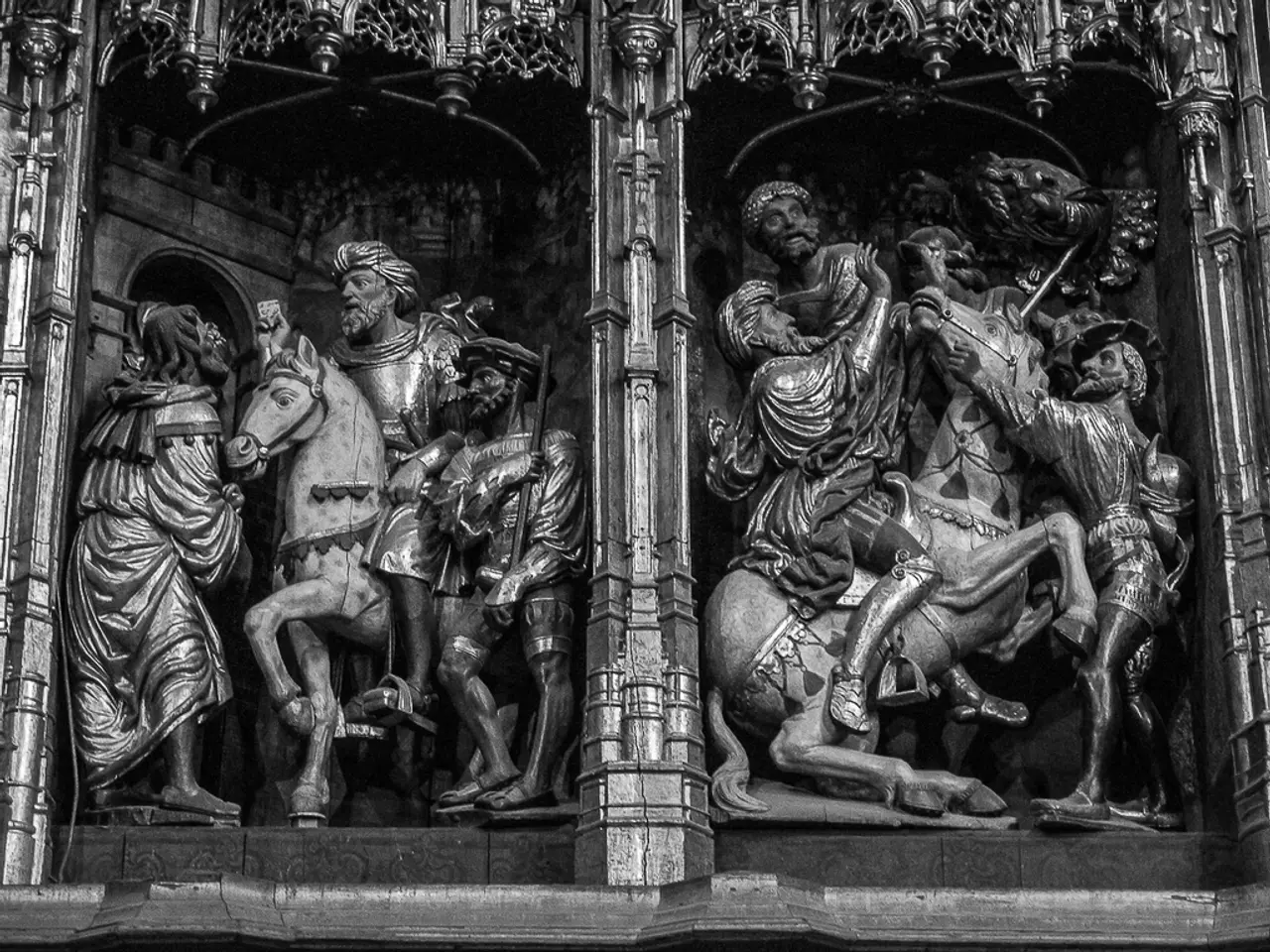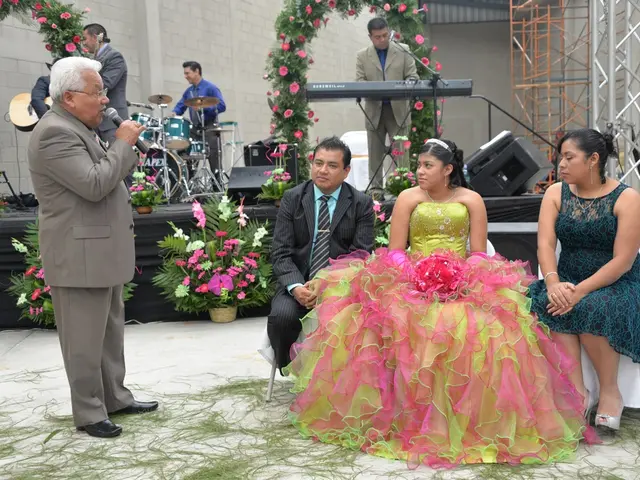AI-driven reinterpretation of stolen artworks by Minne Atairu
Minne Atairu's latest work, "Deshrined Ancestors (2024)", is currently on display at CalArts REDCAT as part of the exhibition "All Watched Over By Machines of Loving Grace". This augmented reality, 3D animated piece presents a thought-provoking reflection on ancestral heritage, cultural displacement, and the reclaiming of identity.
The title suggests a critical engagement with the concept of ancestral heritage and how it may be "deshrined" or displaced, potentially addressing the cultural disruption and ongoing legacy tied to artifacts like the Benin bronzes. These bronzes, deeply significant ancestral objects taken from the Kingdom of Benin during colonial looting, have come to symbolize cultural identity, colonial violence, and issues of restitution.
Atairu's work may be exploring themes of memory, displacement, and the digital or conceptual reclamation of these cultural treasures, embedding ancestral significance within a new technological context that challenges traditional narratives about artifacts removed from their origin.
The medium of augmented reality itself can symbolize a bridge between the physical and spiritual presence of ancestors and the contemporary processes of cultural displacement and revival, mediated by technology. The assemblage form and the setting within an exhibition focused on machines and grace also hint at a dialogue between the human, technological, and ancestral realms.
Atairu's "Deshrined Ancestors" features a primary face with cowrie shells for eyes, and ram's-horn handles on each side of the head. The back of the sculpture features a petite totem of two baby doll heads crowned by a red ribbon and adorned with gilded shells. The virtual sculpture has a smooth, rubbery appearance, and gold chains wrap around the figure, with mini heads in pink, fuchsia, and blue hanging like charms.
In contrast, Atairu's "To the Hand" installation, which was part of her series "Igùn" (2020-), delved into the 17-year interregnum of artistic output under British conquest. This work, however, does not appear to have any oscillation between human and alien-like features, smooth rubbery appearance, cowrie shell eyes, ram's-horn handles, petite totem of two baby doll heads, gilded shells, gold chains, or accompanying field recordings of ceremonial cries and chants.
Atairu, who studied art history as an undergraduate at University of Maiduguri, focusing on various cultural movements in Benin, pre- and post-colonialization, is aware of the growing skepticism around AI, especially within communities of color, and noted the racial biases within the system. Her practice creates footnotes for creators to address the system's shortcomings and leaves a trail for future users.
Atairu began to work with artificial intelligence during the pandemic, developing artworks using tools like Midjourney and Blender. Her "To the Hand" installation featured 3D-printed sculptures rendered in Blender and infused with bronze.
Atairu believes in revealing issues of racial bias to ensure that AI does not traumatize communities of color. Her work serves as a testament to the power of art in addressing historical injustices and fostering dialogue about cultural identity, displacement, and reclamation.








